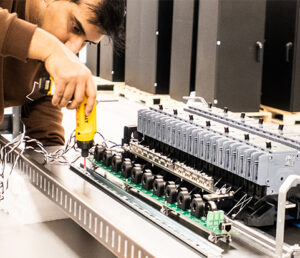People now recognize cryptocurrency beyond its initial status as an abstract concept. Digital currencies like Bitcoin and Ethereum along with others are attracting several people to investigate residential mining possibilities. The guide presents essential information suitable for beginners How to Mine at Home to start crypto mining.
What is Crypto Mining?
The blockchain ledger requires crypto miners to execute two purposes: transaction verification and ledger entry addition. A computer system using mining rigs enables users to solve the mathematical problems to obtain digital currencies as their reward. Digital gold hunting exists in the digital realm when using coded procedures.
What is a Crypto Mining Machine?
Crypto mining machines serve as hardware devices that miners use to extract cryptocurrencies through the process known as mining rig. The machines include high-performance components that allow them to function without interruption to solve complex computational problems.
There are Three Main Types of Mining Machines:
ASIC Miners (Application-Specific Integrated Circuits): Ultra-efficient, built specifically for mining a particular coin (like Bitcoin).
GPU Rigs (Graphics Processing Units): More flexible, ideal for mining a variety of altcoins like Ethereum.
CPU Miners (Central Processing Units): Least powerful, but can be used for low-difficulty coins or as a learning tool.
How to Mine at Home: Step-by-Step
1. Choose the Right Coin
One of the first steps when preparing a home-based crypto mining setup is selecting a cryptocurrency for mining operations. Popular beginner-friendly coins include:
Ethereum Classic (ETC)
Ravencoin (RVN)
Monero (XMR)
Dogecoin (via merged mining)
2. Get the Right Hardware
People often begin home mining operations with GPU rigs since these units offer the best combination of effectiveness and cost-efficiency and operational flexibility. You’ll need:
A powerful GPU (or multiple GPUs)
A mining motherboard
Adequate RAM and CPU
Power supply units (PSUs)
Cooling fans and possibly air conditioning (mining gets hot!)
A mining frame to hold everything
3. Download Mining Software
The mining software acts as an interface that combines your computer system with blockchain functionality. Some popular options include:
NiceHash: Great for beginners; mines the most profitable coin and pays in Bitcoin.
PhoenixMiner or T-Rex: More advanced tools for GPU miners.
4. Join a Mining Pool
Miners who operate individually often discover that home to mine at home from its core tends to produce meager results. Your computing strength becomes stronger by joining a pool which allows frequent cryptocurrency reward accumulation. Popular pools:
Ethermine
F2Pool
2Miners
5. Set Up a Wallet
A crypto wallet serves as your necessary storage solution for storing your mined coins. The market offers both desktop wallets along with hardware wallets including Ledger and Trezor.
6. Monitor and Maintain
Constant monitoring of your mining device performance and temperature levels is essential. The GPU power utilization can be managed using MSI Afterburner software to decrease wear.
Tips for Mining at Home
Electricity Costs Matter: Mining consumes a lot of power. Check your local electricity rates before investing.
Noise and Heat: Mining rigs can be noisy and hot. Set them up in a well-ventilated room or basement.
Legal and Tax Considerations: Always check local laws regarding mining and report your earnings.
Final Thoughts
The right approach to home mining operation will yield both excitement and monetary gains. Small setups combined with mining knowledge should be your starting point and you should expand your operation as you learn. Through obtaining the appropriate crypto mining machine and setup setup you can transform your house into a compact crypto-coined operation.



